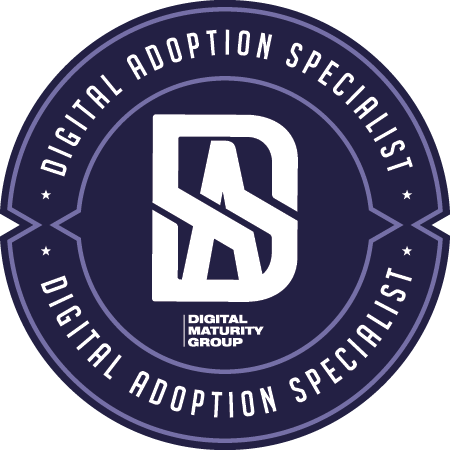In recent years, the world has witnessed a significant shift in the way people work. The rise of remote work has transformed traditional work environments and opened new opportunities for individuals and businesses alike. As organizations embrace this change, digital adoption becomes a crucial factor in ensuring productivity and success. This article explores the concept of digital adoption in the age of remote work, its importance, and effective strategies for businesses to embrace this paradigm shift.
The proliferation of remote work has revolutionized the modern workplace, enabling employees to work from anywhere, anytime. However, the successful implementation of remote work requires organizations to embrace digital adoption fully. Digital adoption refers to the process of integrating digital tools, software, and technologies into everyday work processes, enabling individuals and businesses to leverage their benefits fully.
Understanding Digital Adoption
Digital adoption involves not only implementing new technologies but also ensuring that employees understand and utilize them effectively. It goes beyond providing access to digital tools; it encompasses training, support, and a cultural shift towards embracing digital transformation. By adopting digital tools and technologies, businesses can streamline their operations, enhance collaboration, improve efficiency, and gain a competitive edge in today’s digital landscape.
The Impact of Remote Work on Digital Adoption
Remote work has accelerated the need for digital adoption. With teams working remotely, organizations must rely heavily on digital tools for communication, project management, and collaboration. The seamless integration and utilization of these tools are essential for maintaining productivity and ensuring effective teamwork. Remote work has created a demand for virtual meeting platforms, cloud-based storage solutions, task management software, and other tools that facilitate remote collaboration.
Importance of Digital Adoption in Remote Work
Digital adoption is critical for the success of remote work initiatives. When employees are equipped with the right digital tools and have the necessary skills to use them, they can overcome the challenges associated with remote work. It empowers individuals to work efficiently, stay connected with their teams, and collaborate seamlessly, regardless of their physical location. Digital adoption also enables organizations to adapt to changing market trends, deliver superior customer experiences, and drive innovation.
Strategies for Successful Digital Adoption
To ensure successful digital adoption in the age of remote work, organizations should consider the following strategies:
- Assessing Digital Needs and Resources: Before implementing any digital tools or technologies, it is crucial to assess the specific needs of the organization and evaluate the existing digital resources. This evaluation helps in identifying gaps and understanding which tools would best align with the organization’s goals and objectives.
- Providing Adequate Training and Support: Training plays a pivotal role in digital adoption. Organizations should invest in comprehensive training programs to educate employees about the purpose, functionality, and benefits of digital tools. Additionally, providing ongoing support and resources ensures that employees can overcome challenges and fully utilize the tools at their disposal.
- Encouraging Collaboration and Communication: Remote work can sometimes lead to isolation and hinder effective communication. Organizations should foster a collaborative work environment by leveraging digital tools that facilitate communication and teamwork. Platforms like project management software, instant messaging applications, and video conferencing tools promote collaboration, keeping teams connected and aligned.
- Embracing Digital Tools and Technologies: To maximize digital adoption, organizations should identify and implement tools that align with their specific needs. Whether it’s cloud-based storage solutions, virtual meeting platforms, or workflow automation software, embracing these technologies enhances efficiency, productivity, and seamless collaboration in a remote work setting.
- Fostering a Culture of Continuous Learning: Digital adoption is an ongoing process, and organizations should foster a culture of continuous learning. Encouraging employees to explore new technologies, providing access to learning resources, and recognizing their efforts in adapting to digital transformation cultivates a growth mindset and ensures that digital adoption becomes an integral part of the organizational culture.
- Ensuring Data Security and Privacy: With remote work, data security and privacy become paramount. Organizations must implement robust security measures to safeguard sensitive information and protect against cybersecurity threats. Training employees on best practices for data security and enforcing strict protocols ensure a secure digital environment.
- Monitoring and Measuring Digital Adoption: To gauge the effectiveness of digital adoption initiatives, organizations should implement monitoring and measurement mechanisms. Tracking key performance indicators (KPIs) related to digital tools’ usage, employee satisfaction, and productivity provides insights into the success of the digital adoption strategy and identifies areas for improvement.
- Addressing Challenges and Concerns: Digital adoption may encounter challenges and resistance from employees. It is essential to address these concerns promptly and provide solutions that alleviate any apprehensions. Encouraging open communication, seeking feedback, and adapting the digital adoption strategy based on employee input fosters a positive environment for embracing digital tools.
Conclusion
The age of remote work demands a strong emphasis on digital adoption. Organizations that prioritize digital adoption strategies and empower their employees with the right tools and training can thrive in the digital landscape. By embracing digital transformation, businesses can overcome the challenges associated with remote work and unlock new possibilities for growth, efficiency, and innovation.
In conclusion, digital adoption is a vital aspect of remote work. By embracing digital tools and technologies, providing training and support, fostering collaboration, and addressing challenges, organizations can ensure a seamless transition to remote work and harness its full potential for productivity and success. Embracing digital adoption is not only a necessity but also an opportunity for organizations to thrive in the age of remote work.
Frequently Asked Questions (FAQs)
- What is digital adoption? Digital adoption refers to the process of integrating digital tools, software, and technologies into everyday work processes to maximize their benefits.
- Why is digital adoption important in remote work? Digital adoption is crucial in remote work as it enables employees to work efficiently, stay connected with their teams, and collaborate seamlessly regardless of their physical location.
- How can organizations foster digital adoption in remote work? Organizations can foster digital adoption by assessing digital needs, providing training and support, encouraging collaboration, embracing digital tools, fostering continuous learning, ensuring data security, monitoring adoption progress, and addressing challenges and concerns.
- What are the benefits of digital adoption in remote work? Digital adoption in remote work enhances productivity, facilitates collaboration, improves efficiency, enables innovation, and helps organizations adapt to changing market trends.
- How can organizations measure the success of digital adoption initiatives? Organizations can measure the success of digital adoption initiatives by tracking key performance indicators related to tool usage, employee satisfaction, and productivity levels.
Book a Wingman Today for a Free Digital Adoption Plan Consultation
There is no doubt that technology is critical to your business today. Organizations need to adopt a digital-minded strategy to be able to thrive. But it’s essential that technology is deployed correctly. And more specifically, you shouldn’t start without a solid digital adoption plan in hand.
If you feel that your current technology infrastructure might be holding your organization back from reaching your goals and objectives, it may be time to invest in a digital adoption plan, like what Wingman can provide you. Contact us today and we can show you how to make your technology work harder and smarter for you by creating your own unique digital adoption plan.
PS: Secure your $15,000 Canada Digital Adoption Grant Today
Did you know you can get up to $15,000 grant towards your digital adoption plan…and an interest free loan up to $100,000 and a hiring subsidy to implement it? Ask us about the Canada Digital Adoption Plan and Boost Your Business Technology Grant. Wingman is an approved CDAP Digital Advisor partner of Canada’s Innovation, Science and Economic Development Canada. Only an approved CDAP Digital Advisor can help you access the CDAP grant to have your digital adoption plan get approved through the CDAP program.
Book a Wingman today to discuss how we can help.






